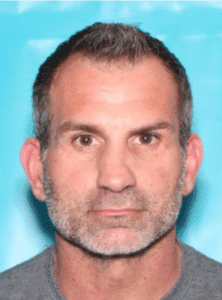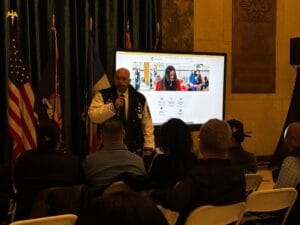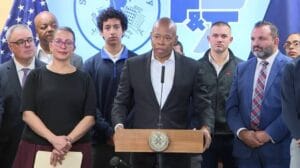NYC expert advises on how to talk with kids

In the terrifying moments after a gunman opened fire on a crowded subway train in Sunset Park, Brooklyn on Wednesday, schools nearby immediately went into lockdown.
Students sheltered in their classrooms, with news alerts pinging on cell phones and smart devices. When class let out, police lights still flickered in the streets.
Among the 22 people wounded or injured in the attack, four were from ages 12 to 18, and though education department officials didn’t release names, they confirmed that some were public school students, according to reports.
The attack came on the heels of other high-profile gun violence across the city. Last week, 16-year-old Angellyh Yambo was killed a few blocks from her Bronx school, University Prep Charter High School, an unintended target as she walked home.
Two other students were wounded. Last month, 12-year-old Kade Lewin was shot and killed as he sat in a car. He was remembered on Wednesday in a memorial service at his school, Brooklyn Science and Engineering Academy.
New York City’s students have been through a lot lately.
Katie Peinovich is a social worker at the Child Mind Institute’s school and community program, who has helped New York City public schools implement trauma treatment interventions.
Peinovich discussed how to talk to children about traumatic events like Tuesday’s shooting, what signs to look for if they need more support, and how to help those who might be scared of riding the subway.
“The first thing is to acknowledge and to validate their feelings that what happened was very, very scary. The ongoing news coverage for our youngest kids — preschoolers and early elementary kids — can give an impression to those kids that this is an ongoing situation. It’s really important for parents and for schools to limit media coverage and to reassure children that this very scary event is now over, and that they are currently safe.
“We think we don’t want to overwhelm children by giving them too much information. But it’s important for them to have a picture, an honest description of what happened — but not too much information that might be overwhelming for them.
“Once parents have acknowledged the facts and validated their kids’ feelings, then they can ask questions: What do you know? What are you worried about? Can you tell me what you’ve been hearing or what your thoughts are?
“This gives parents a chance to, first of all, correct any misinformation. It also gives them the chance to respond directly to the child’s concern. It can be hard to guess exactly what kids are concerned about, even for parents who feel like they know their kids very well. So it’s best to ask questions.
“If they [Parents and Teachers] notice that kids seem more on edge or they’re experiencing what we call hypervigilance, which is when their fight-or-flight mechanism can be activated by an event like this. So kids may have a more heightened startle response. They may seem more irritable. They may be reluctant to separate from caregivers, things like that. Those kinds of behaviors — even if kids aren’t outwardly saying that they’re frightened or expressing fear — can be an indication, particularly if you see sudden changes in those kinds of things,” she said.













